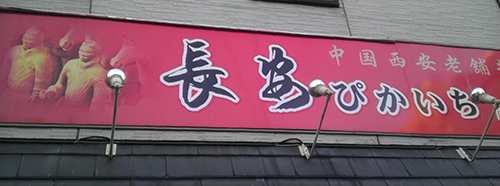168. The "Long" Radical: 長
Though 長 means "long," I'll keep this short. There's little to say about this shape, which doubles as the "long" radical and as the following autonomous character:
長 (173: long; growth; senior; strong point)
Because this kanji carries the Joyo kun-yomi なが•い, the Japanese call the radical ながい. English speakers likewise refer to it as the "long" radical.
According to Henshall in his newer edition, ancient forms of 長 show a "person with long hair, in some cases with a walking stick." He cites one expert who notes that "only old people were allowed long hair." (That statement must pertain to ancient China.)
Joyo Kanji with Radical 168
Our radical is on duty just in one Joyo character—namely, 長 (173) itself. It serves as a mere component in these three kanji:
帳 (347: notebook; account book; curtain)
張 (752: to expand; tension; persist; cover; stick out; watch for; display; style; counter for bows, stringed instruments, and paper lanterns)
髪 (1706: hair on the head)
Our radical crops up twice in the word 長髪 (ちょうはつ: long hair)!
Photo Credit: Eve Kushner
In the sign above, one could read 長松 as ながまつ, though several other yomi are possible for this surname. The first two words are 和風 (わふう: Japanese-style) and 小物 (こもの : accessories; small articles).
My real interest in sharing this image involves the shape of the 長. In the sign, the lower half of this kanji has slid to the left, as if the top and bottom aren't "fused" together as one entity. Actually, despite the look of the printed 長, one does not draw the left side as one long stroke. As you can see from this diagram, stroke 6 is slightly to the left of stroke 1:

The Variant Form
Whereas 長 consists of eight strokes, the variant form 镸 has seven. That simpler shape appears in the top left quadrant of 髪, though it's hard to see that clearly!
When 镸 occupies the left side of characters, we can call the radical ながいへん, but I have found no definitive examples of that. Although the non-Joyo 肆 (four) might be one, sources disagree about whether or not 镸 is on duty there.
Two Other Radicals
One might mistake 髟 for another example of 镸 on the left. In fact, the whole 髟 shape constitutes another radical involving length:
髟 (radical 190: "long hair")
And actually, it is 髟 (not just 镸) that occupies the top of 髪 (1706: hair on the head).
Note that there is also a "short hair" radical:
彡 (radical 59: "short hair")
Whereas the 長 radical can shift to the left side of a character (but never the right), 彡 appears only on the right.
Incidentally, combining radical 168 (長) with radical 59 (彡) produces radical 190 (髟)!

Photo Credit: Lutlam
In Saitama Prefecture (north of Tokyo), one Chinese restaurant is called 長安ぴかいち (ちょうあんぴかいち). The Chinese city once named 長安 (ちょうあん: Chang'an) is now known as 西安 (せいあん: Xi'an). And the Japanese slang ぴかいち (光一: outstanding; number 1) comes from the card game 花札 (はなふだ).
In the sign, the 安 appears in semicursive script, resembling the hiragana あ, which the Japanese actually derived from the cursive 安
